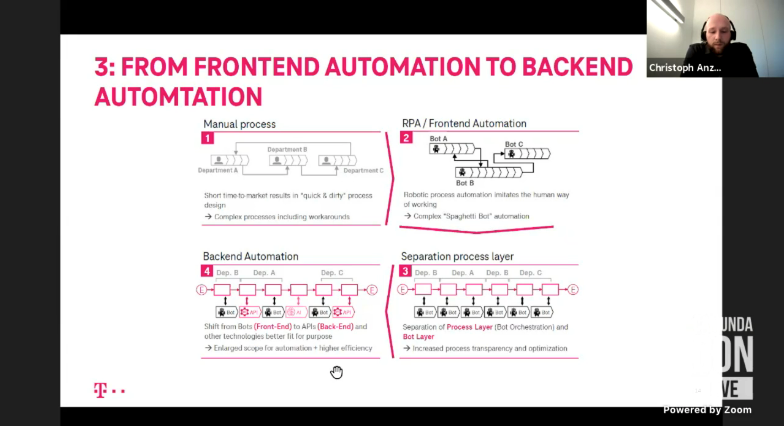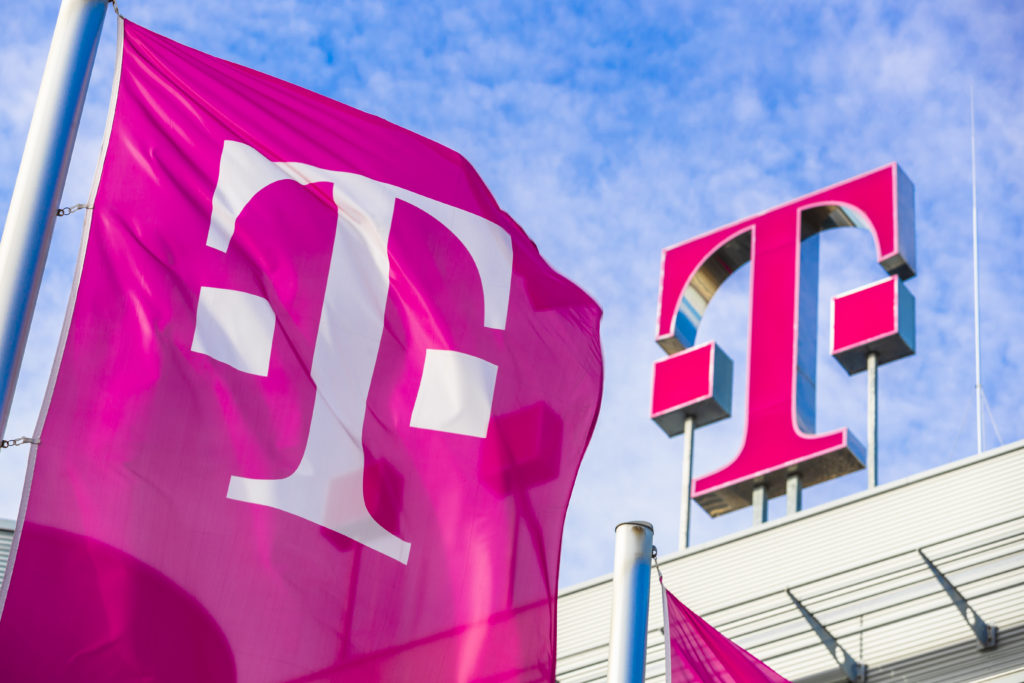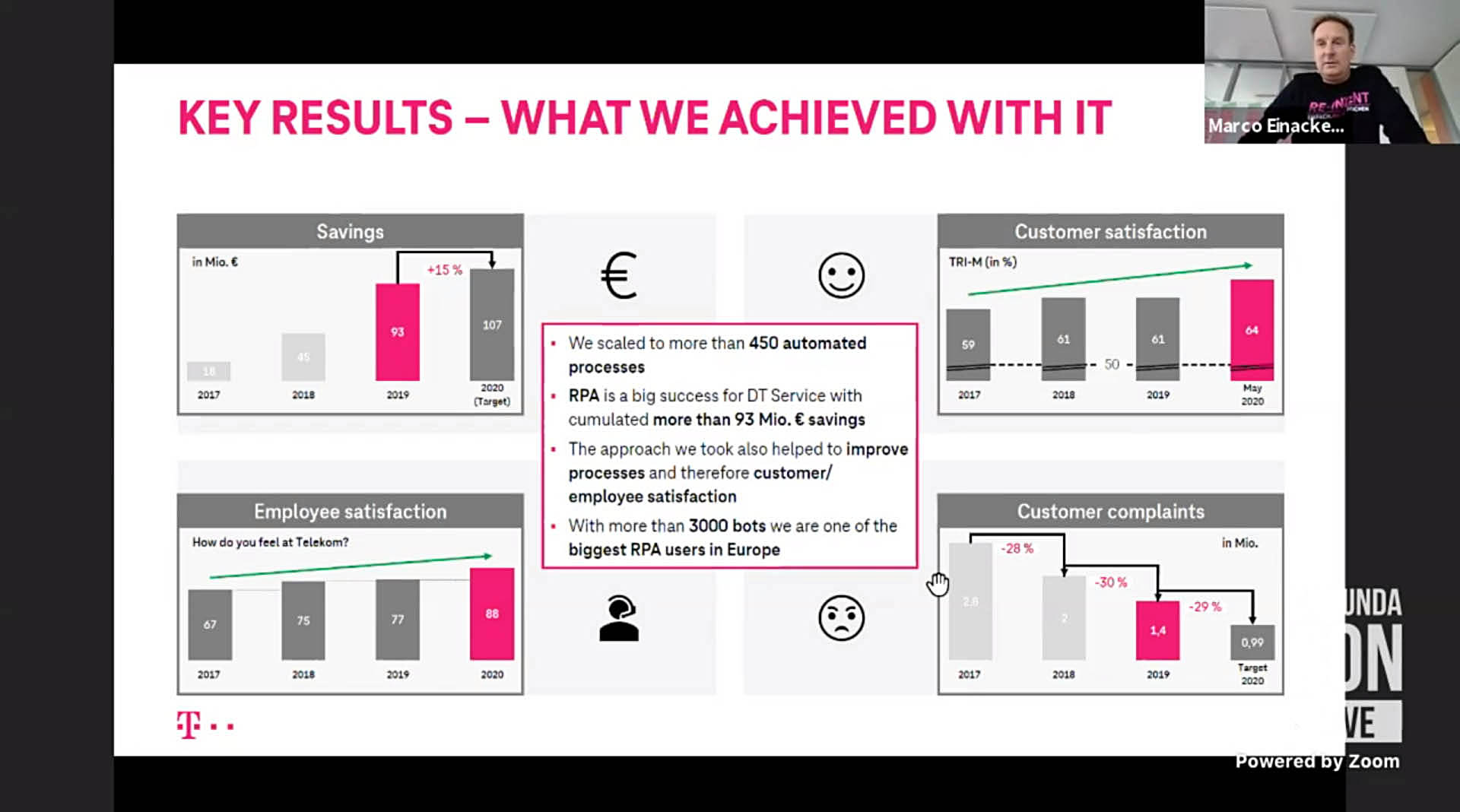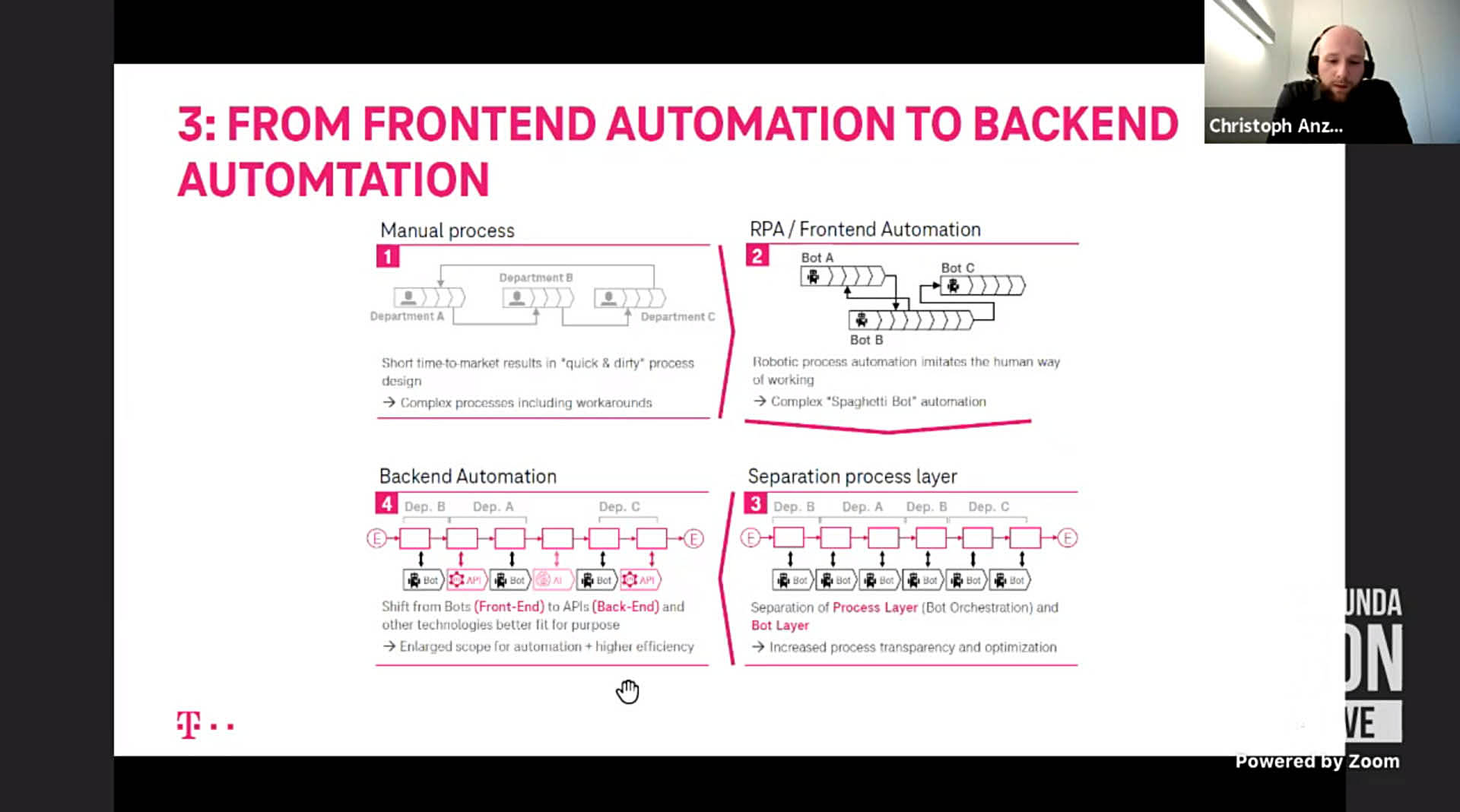How Deutsche Telekom scaled automation fast – using RPA and Camunda
Deutsche Telekom, one of the world’s leading integrated telecommunications companies, manages one of Europe’s largest Robotic Process Automation (RPA) implementations, automating more than 450 processes managed by 3000 unattended bots.
Despite achieving savings of more than EUR 93 million last year through RPA, Deutsche Telekom’s Service division, which takes care of 100 million customer requests each year, has embarked on a mission-critical journey to gradually transition from frontend to backend automation, replacing bots with APIs.
Significant Scale
Deutsche Telekom’s digital transformation journey began in 2015 as the business sought to tackle pain points in manual customer service processes, according to Vice President Service IT Marco Einacker. However, with underlying legacy IT systems which didn’t provide APIs, RPA was one of the few technologies that could be implemented quickly and without too much heavy lifting.
The results were swift and significant. Over the following years, Deutsche Telekom scaled up RPA automation in different lines of business to become one of the one of the biggest RPA users in Europe. By 2019, it had automated more than 450 processes, managed by 3000 unattended bots, achieving savings of more than EUR 93 million in 2019.
“RPA is a good thing and it has positive effects on our organization, bottom line and on customers and employee satisfaction,” Einacker said.

The Downside of Fast Solutions
Despite significant success, Deutsche Telekom began to experience issues at scale, ending up with seven different RPA platforms and seven different libraries to maintain. With such complexity, a single change in the main CRM system led to change requests on four different RPA platforms.
“Over the years we automated more and more complex processes so code became harder to maintain. We feared the risk of technical debt as we had no backend automation,” Einacker said.
Limitations were also growing fast on the business-side. As business knowledge and RPA code were strongly linked, developers had become the business process experts simply because they had built the processes in code. Problems also began to arise as Deutsche Telekom looked to implement end-to-end processes and found it was impossible, because RPA technology couldn’t be easily combined with different tasks, such as manual tasks, or RPA technologies from different vendors.

Automation Reinvented
In 2018, Deutsche Telekom Service embarked on a new strategy: Automation Reinvented, with the goal of separating processes from the technical layer and moving to backend automation.
It implemented a new centralized governance, consolidating the seven RPA platforms down to three, chosen because they had the best scalability and functionality. The centralized governance allowed for collective decisions on whether future solutions should be bot-driven, or become a core IT solution.
To separate the process and technical layer, Deutsche Telekom Service built a new platform – OREO. This is where Camunda comes into place as the workflow engine which handles all business processes in BPMN and DMN, and orchestrates RPA and user tasks across end-to-end processes.
Business experts were able to revisit old RPA-driven processes and reinvent them, cutting out unnecessary tasks and refining individual steps. Afterwards, developers automated each step of the process.
Camunda provides a common language for business experts and developers in the form of BPMN. Using this globally recognized graphical language reduces complexity before developers start programming, meaning they write less code and save significant development time. And by slicing up each automated step, developers can decide if an RPA bot or a human task is the best solution for various steps in the process.
“BPMN models are process optimization engines for us, we gain transparency into how complex a process is and we get ideas on how to simplify it. With this end-to-end view, with this increased transparency, we are able to make process improvements,” Einacker said.

End-to-end Visibility and Orchestration
Now it has achieved the separation of the RPA and technical layer, the next step in Deutsche Telekom’s journey is to get rid of bots entirely and build APIs — moving from frontend to backend automation.
If you’re interested in a deeper dive into Deutsche Telekom Service’s journey, you can watch Marco Einacker’s CamundaCon LIVE presentation on-demand.




